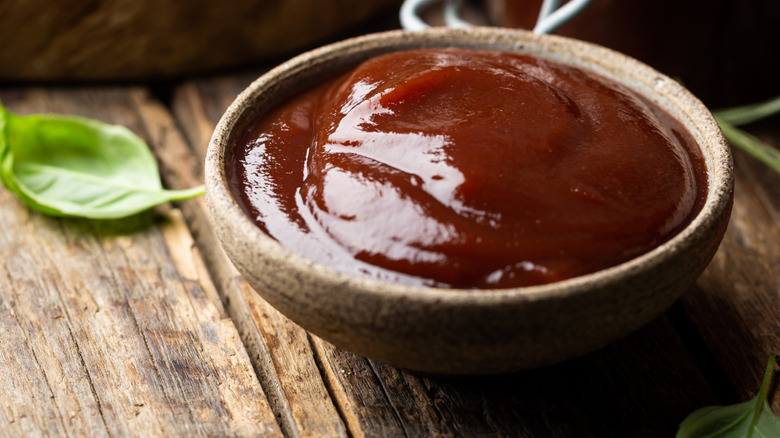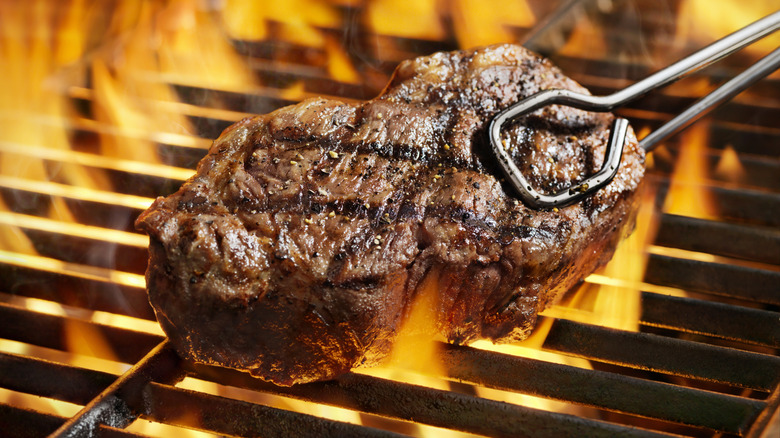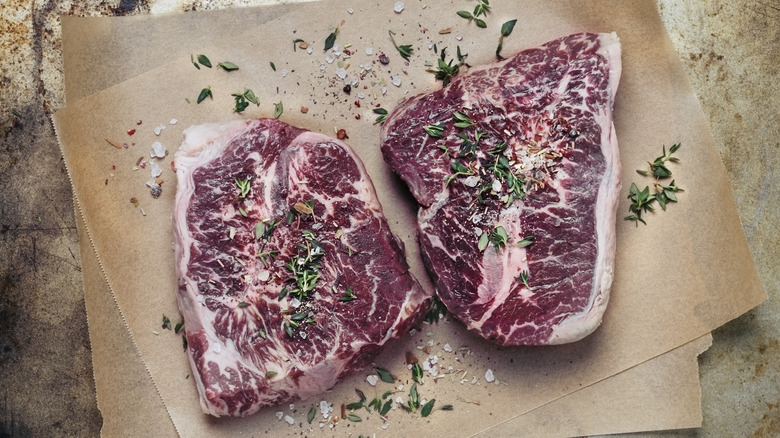How BBQ Sauce Can Save Your Overcooked Steak
Anyone who's ever seared a steak knows that the thin line between well-done and overcooked can be crossed in a matter of seconds. Whether the grill was too hot or you left the meat on the heat for too long, there's no need to waste an overcooked steak by tossing it away. In fact, your steak can be saved with one tangy condiment you probably already have on hand: barbecue sauce. For expert advice on salvaging overdone steaks, Food Republic spoke to chef K.C. Gulbro, owner of FoxFire and chef ambassador for Certified Angus Beef.
There are dozens of barbecue sauce styles out there, but not all of them are up to the task of reviving an overcooked piece of meat. "Look for sauces that have a high acid content, such as vinegar-based sauces," Gulbro says. "The acid helps break down the protein and makes the beef more tender. It also helps the flavors penetrate the steak." Whether you gravitate toward the sharp mustard-based South Carolina barbecue sauce or prefer the sweet-and-savory Kansas City version, both vinegar-forward styles will get the job done.
How to bring overcooked steak back to life
When a steak is cooked past its ideal temperature, it not only becomes tough and chewy, but also dries out and loses flavor as its natural juices evaporate. To revive an overcooked steak, simply warm up some barbecue sauce and slather it onto the meat to reintroduce lost moisture and flavor. If you don't have time to make sauce from scratch, plenty of store-bought options will work just as well. When shopping, chef K.C. Gulbro suggests looking for brands that use tenderizing ingredients like citrus juice, vinegar, and honey for the best results.
Once you've revitalized your steak, there are plenty of ways to put it to good use. "Overcooked steaks are best used in pasta, tacos, or sandwiches," says Gulbro. "Chop them into smaller bite-sized pieces, add a sauce or glaze, and enjoy!" Turn the mistake of overdone meat into an opportunity to make Taco Bell-style garlic steak fries. You can also use chopped steak to upgrade your grilled cheese or make any number of customizable beef sandwiches.
How to prevent overcooked steak in the first place
Of course, there's no need to rely on barbecue sauce if you can prevent overcooking in the first place. Even before you break out the skillet or fire up the grill, certain prep steps can set you up for success. If you plan to use a marinade for flavor, be careful not to overdo it.
"Exceeding 12 hours could result in tough meat," chef K.C. Gulbro warns. It's also crucial to bring your meat to room temperature before cooking, as starting with cold steak is a big no-no that can lead to uneven results.
Choosing the right cut of steak for grilling or searing also makes a significant difference. "Ribeye, filet, and New York strip steaks should be watched closely, unlike a roast," says Gulbro. Once you're ready to cook, "have a thermometer, know your equipment, and check your steaks every five to ten minutes depending on your preferred temperature," he adds. Aim for a temperature of 130 to 135 degrees Fahrenheit for medium-rare steak and 160 to 165 degrees for well-done. Since beef continues to warm internally after being removed from heat, it's best to pull your steak from the grill or pan once it's within five degrees of your desired temperature, allowing it to finish cooking as it rests.



